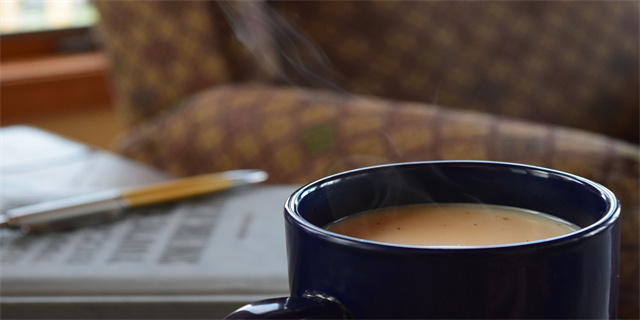首页 > 精选百科 正文
Introduction
Shaking Hands: A Symbol of Unity and Connection
Shaking hands is a universal gesture that transcends cultural boundaries, representing a symbol of unity and connection. This age-old form of greeting and agreement has been practiced throughout history and continues to hold great significance in today's society. In this article, we will explore the origins and cultural significance of shaking hands, the proper etiquette surrounding this gesture, and its role in fostering social and professional relationships.

The Origins and Cultural Significance of Shaking Hands
The act of shaking hands dates back thousands of years and has roots in ancient civilizations. Its exact origins are difficult to trace, but historians believe that it was a gesture used by individuals to demonstrate peaceful intentions. In ancient Greece, shaking hands was seen as a gesture of mutual trust and respect, while Romans used it as a symbol of fidelity and loyalty.
As societies developed, the custom of shaking hands spread across various cultures, each attaching its unique meaning to the gesture. In many Eastern cultures, a slight bow or a handshake with both hands is preferred as a sign of deference and respect. In Western cultures, a firm and confident handshake is considered a sign of strength and trustworthiness.

Shaking hands has also played a significant role in diplomatic relations, marking the beginning and end of important meetings or negotiations. World leaders often engage in handshakes, symbolizing cooperation and unity on the global stage.
Proper Handshake Etiquette
While shaking hands may seem like a simple gesture, there are certain etiquettes that one should follow to ensure a proper and respectful interaction. First and foremost, it is essential to make eye contact and smile while shaking hands, as this conveys sincerity and warmth.
When extending your hand, it should be done vertically, with the thumb up and fingers naturally extended. The grip should be firm but not overpowering, ensuring a comfortable and equal handshake. Avoid gripping too firmly, as it may be perceived as aggressive, or too weak, as it may be seen as a lack of confidence.
It is crucial to remember that shaking hands is a two-way interaction. It is polite to reciprocate the grip and movement initiated by the other person. The handshake should be brief and gentle, lasting for around two to three seconds. Excessive shaking or holding on for too long can make the other person uncomfortable.
Shaking Hands in Social and Professional Relationships
Shaking hands plays a vital role in both social and professional settings, creating a personal connection between individuals. In social situations, shaking hands is often used as an initial greeting or introduction. It helps establish trust and rapport, as well as conveying a sense of equality and openness.
In the business world, shaking hands is an essential part of networking and building professional relationships. It is customary to shake hands when meeting a new colleague, potential client, or during job interviews. A handshake can set the tone for the interaction and leave a lasting impression on the other person.
Furthermore, shaking hands can be a gesture of congratulations or agreement. In sports, teammates often shake hands to celebrate a victory or show solidarity. Similarly, shaking hands can be a sign of agreement and commitment during contract signings or sealing a deal.
Conclusion
Shaking hands, as a symbol of unity and connection, holds immense cultural and social significance. It is an age-old gesture that continues to play a vital role in fostering relationships and establishing trust. By following proper handshake etiquette and understanding its cultural context, we can engage in this universal gesture with respect and understanding, creating meaningful connections with others.
猜你喜欢
- 2024-01-16 pop海报设计(POP海报设计:如何吸引目光,引发人们的购买欲望)
- 2024-01-16 aabc的词语四字(ABCD的四字词语)
- 2024-01-16 专业类别目录查询(了解各类专业类别目录)
- 2024-01-16 vuejs教程(Vuejs 简易教程:打造交互式前端应用)
- 2024-01-16 10个红包情话(10个红包情话,让你的红包礼物更加有爱)
- 2024-01-16 dropdownlist(解析和使用HTML中的Dropdown List(下拉列表))
- 2024-01-16 爱玛电动车型号(爱玛电动车型号的选择与推荐)
- 2024-01-16 shakehands(Introduction)
- 2024-01-16 tuition(Understanding the Cost of Education Exploring the Concept of Tuition)
- 2024-01-16 利息计算方法及公式(简单的利息计算方法与公式)
- 2024-01-15 钟循仁 徐江汉 调查组(探索钟循仁、徐江汉调查组的实地调查)
- 2024-01-15 lol幸运召唤师(Lucky Summoners The Charmed Existence in the World of League of Legends)
- 2024-01-16pop海报设计(POP海报设计:如何吸引目光,引发人们的购买欲望)
- 2024-01-16aabc的词语四字(ABCD的四字词语)
- 2024-01-16专业类别目录查询(了解各类专业类别目录)
- 2024-01-16vuejs教程(Vuejs 简易教程:打造交互式前端应用)
- 2024-01-1610个红包情话(10个红包情话,让你的红包礼物更加有爱)
- 2024-01-16dropdownlist(解析和使用HTML中的Dropdown List(下拉列表))
- 2024-01-16爱玛电动车型号(爱玛电动车型号的选择与推荐)
- 2024-01-16shakehands(Introduction)
- 2023-02-24大盘鸡的家常做法(家常版大盘鸡,方法简单,好吃接地气,吃完汤汁拌面,真过瘾)
- 2023-02-24大连在哪个省(东北三省最发达的城市——大连)
- 2023-02-24大麦茶怎么泡(大麦茶怎么泡?)
- 2023-02-24河蚌怎么处理(为什么在农村很少人吃河蚌?)
- 2023-02-24牛肉丸子的做法(自制纯手工牛肉丸,劲道弹性足,鲜香有嚼劲)
- 2023-02-24浏览器兼容性(浏览器兼容模式怎么设置?)
- 2023-02-24zuoche(领导开车的礼仪)
- 2023-02-24获取ip地址(如何查看电脑ip地址?)
- 2024-01-16专业类别目录查询(了解各类专业类别目录)
- 2024-01-16dropdownlist(解析和使用HTML中的Dropdown List(下拉列表))
- 2024-01-15缚龙为后作者的微博(故事:负伤的缚龙)
- 2024-01-15原料英语ingredient缩写(Decoding the ABCs of Ingredients in Food)
- 2024-01-15eclipse(掌握Eclipse,别让你的开发变得困难重重)
- 2024-01-14opple手机(探讨OPPLE手机在智能市场中的竞争优势)
- 2024-01-14acrylic(Exploring the Versatility and Beauty of Acrylic)
- 2024-01-14如何封装系统镜像(如何制作系统镜像)
- 猜你喜欢
-
- pop海报设计(POP海报设计:如何吸引目光,引发人们的购买欲望)
- aabc的词语四字(ABCD的四字词语)
- 专业类别目录查询(了解各类专业类别目录)
- vuejs教程(Vuejs 简易教程:打造交互式前端应用)
- 10个红包情话(10个红包情话,让你的红包礼物更加有爱)
- dropdownlist(解析和使用HTML中的Dropdown List(下拉列表))
- 爱玛电动车型号(爱玛电动车型号的选择与推荐)
- shakehands(Introduction)
- tuition(Understanding the Cost of Education Exploring the Concept of Tuition)
- 利息计算方法及公式(简单的利息计算方法与公式)
- 钟循仁 徐江汉 调查组(探索钟循仁、徐江汉调查组的实地调查)
- lol幸运召唤师(Lucky Summoners The Charmed Existence in the World of League of Legends)
- 缚龙为后作者的微博(故事:负伤的缚龙)
- 悍将传世服务端源码(悍将传世服务端——探索架构设计)
- xp系统镜像下载(XP系统ISO镜像下载与安装方法)
- office2013激活(激活Office 2013的详细步骤与方法)
- win7如何更改ip地址(如何在Windows 7中更改IP地址)
- accomplice(Accomplice or Accidental Involvement Unraveling the Complexity of Being an Accomplice)
- 设计说明英文翻译器(Design Explanation of an English Translator)
- peril danger risk hazard(Perilous Times Navigating the Dangers of Peril, Danger, Risk, and Hazard
- brunt of shock absorption(Dealing with the Impact Understanding the Brunt of Shock Absorption)
- 公函的范文模板(范文模板:公函的写作要点)
- 北京富凯大厦故事(富凯大厦的传奇故事)
- musicking(Making Music A Journey of Creativity and Expression)
- mirandacosgrove(Miranda Cosgrove Rising Star of the Entertainment Industry)
- infinova(无限星辰:打造智能安防领域的颠覆者)
- 原料英语ingredient缩写(Decoding the ABCs of Ingredients in Food)
- 适合家养大型犬排名前十名(家庭宠物大型犬前十名)
- eclipse(掌握Eclipse,别让你的开发变得困难重重)
- opple手机(探讨OPPLE手机在智能市场中的竞争优势)
